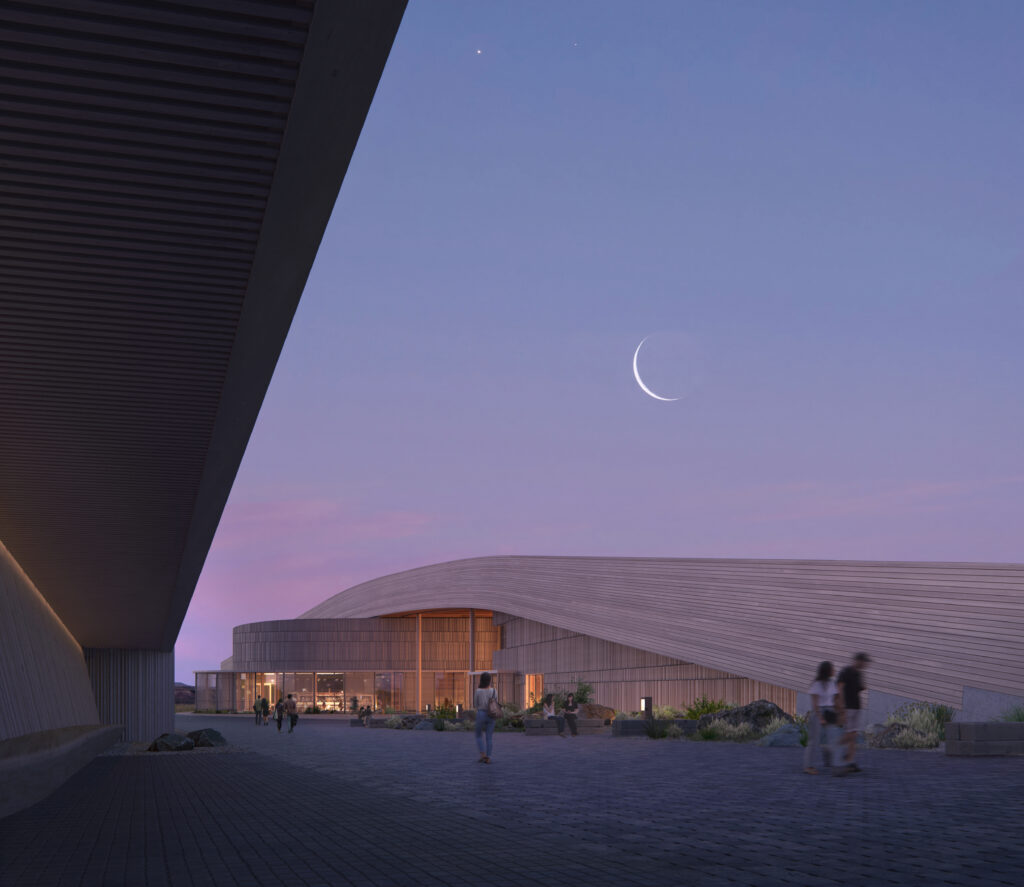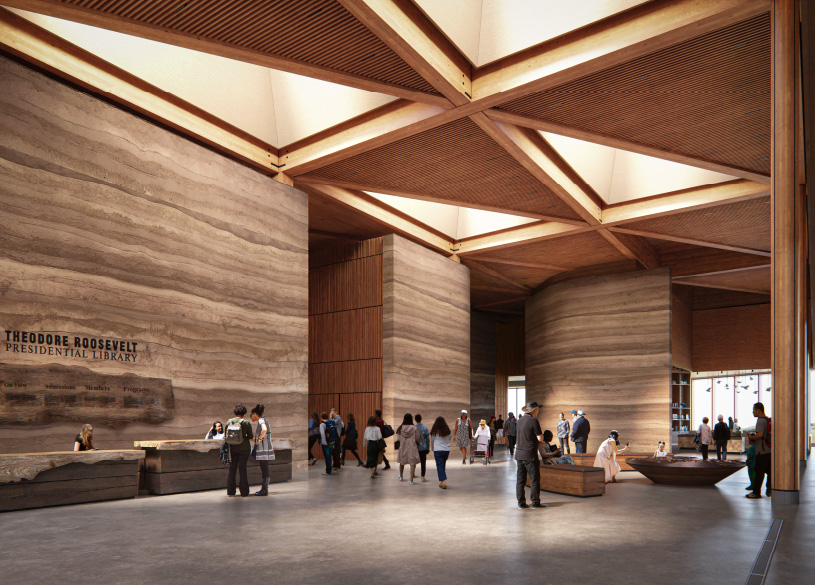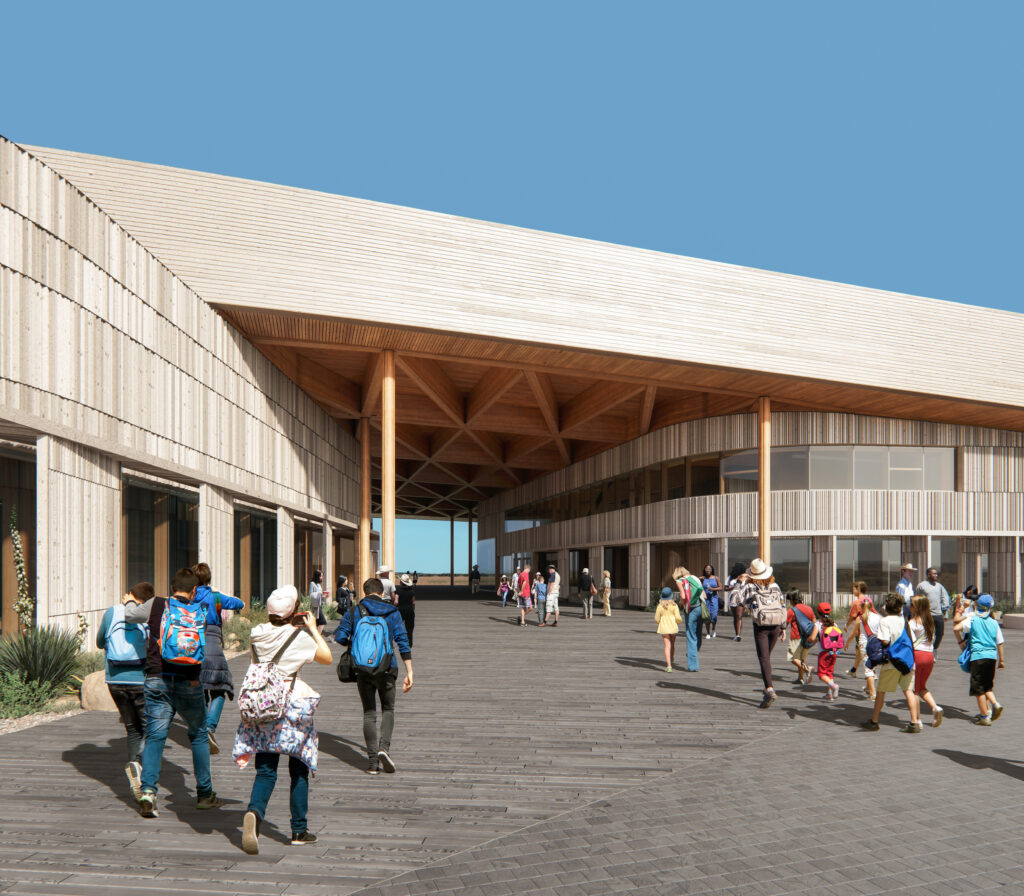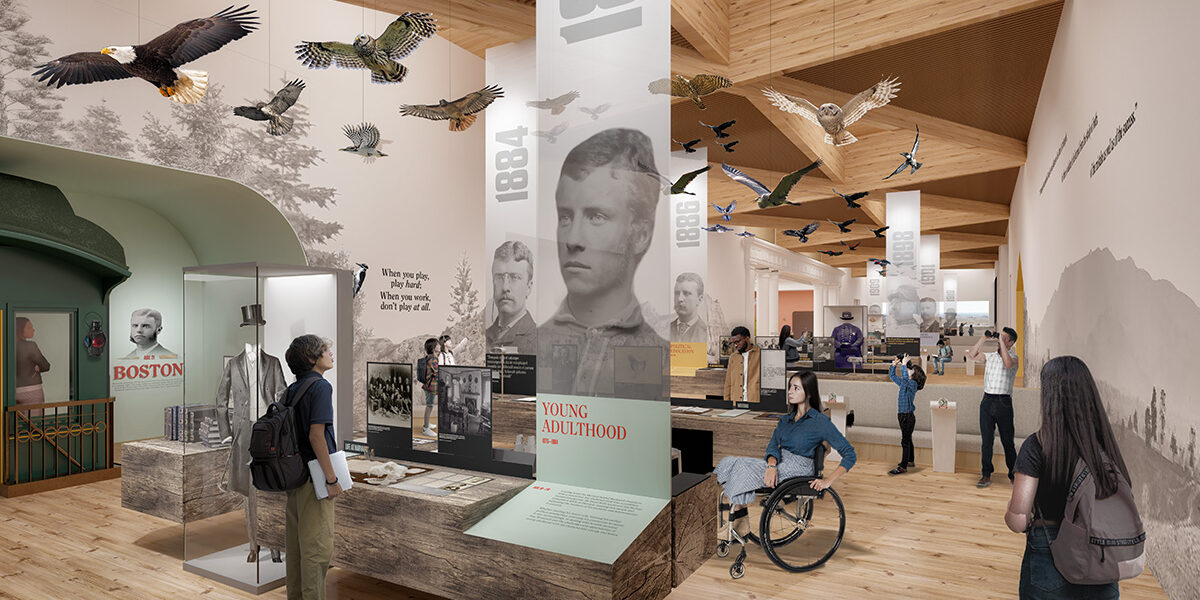Last year, representatives from the architectural firms of Snøhetta and JLG Architects made a presentation of The Theodore Roosevelt Presidential Library at the AIA South Dakota Annual Convention. It is an exciting project in the North Dakota Badlands near Medora, N.D., that will become a major attraction once it opens. We contacted Matt Brinely of the Theodore Roosevelt Presidential Library to catch us up on the progress.
Poised at the edge of the Badlands in Medora, North Dakota, the Theodore Roosevelt Presidential Library (TRPL) is set to become a transformational cultural landmark—one that honors not only the 26th President’s enduring legacy but also the landscape that shaped him. Designed by Snøhetta in collaboration with JLG Architects, JE Dunn, and Confluence, the TRPL is more than a building. It’s a regenerative presence in the land, an architectural embodiment of Roosevelt’s lifelong dedication to conservation, civic participation, and fearless leadership.
“I never would have been President if it had not been for my experiences in North Dakota.”
Theodore Roosevelt
The design process was rooted in Roosevelt’s own values—chief among them his reverence for nature. The TRPL team adopted a rigorous sustainability agenda from the outset, pursuing full certification under the Living Building Challenge (LBC), one of the world’s most ambitious performance standards for sustainable architecture. The goal is not just to minimize environmental harm, but to actively improve the ecosystem.

A building that heals the land
The site’s design honors Roosevelt’s formative experiences in the Dakota Territory, where he famously said, “I never would have been President if it had not been for my experiences in North Dakota.” The Library occupies a ridgeline just outside Theodore Roosevelt National Park, overlooking restored native prairie. The structure itself is embedded in the landscape, rising organically from the bluff. Its roof is planted with native grasses, making the building appear to be part of the land, and contributing to the project’s pursuit of the LBC’s “Four Zeros”: net-zero energy, water, carbon, and waste.
To support this vision, the TRPL integrates a wide array of sustainable strategies: reclaimed timber for cladding and interior finishes, locally sourced stone, low-VOC materials, energy-efficient AV systems, and LED exhibit lighting. Trail sensors and smart systems dim or shut off equipment when not in use, reducing operational loads. The Library will function off renewable energy sources and include systems for water harvesting and treatment.

Architecture meets experience
Snøhetta’s design intentionally blurs the line between structure and experience. Loops and pathways wind through indoor and outdoor spaces, creating opportunities for reflection and discovery. At the heart of the Library are two gallery types: Narrative Galleries, which offer contextual interpretation, and Adventure Galleries, which immerse visitors in participatory activities inspired by Roosevelt’s life.
The Trailblazer mobile platform personalizes this journey, guiding guests through a “hero’s journey” narrative framework—encouraging each participant to “dare greatly” as Roosevelt did. By using wearable technology, visitors earn digital badges tied to values like leadership and conservation, reinforcing TR’s legacy in tangible, modern ways.

A living legacy
TRPL is more than a tribute to a past president—it is a call to future action. As a Living Building and a people’s presidential library, it redefines what civic architecture can be: regenerative, participatory, and deeply rooted in place.
To learn more and follow the project, visit trlibrary.com online.








Excellent Article. Compelling work. Bully!
I am a huge fan of Snohetta… Props to the partners for the collaboration.
What a cool project for our neighbors! I’m looking forward to taking a family vacation there once it’s complete!!